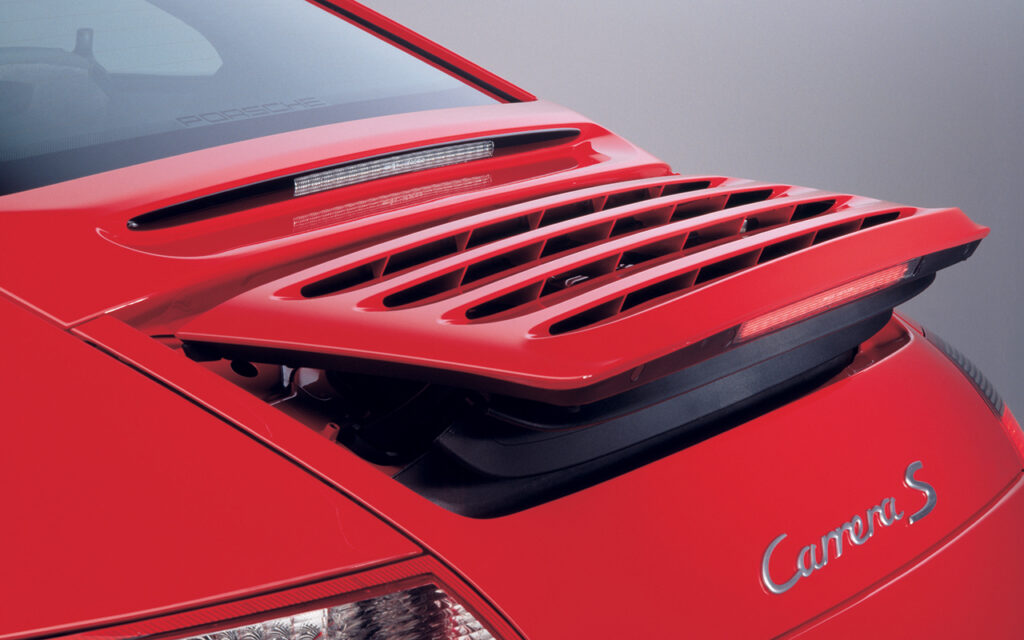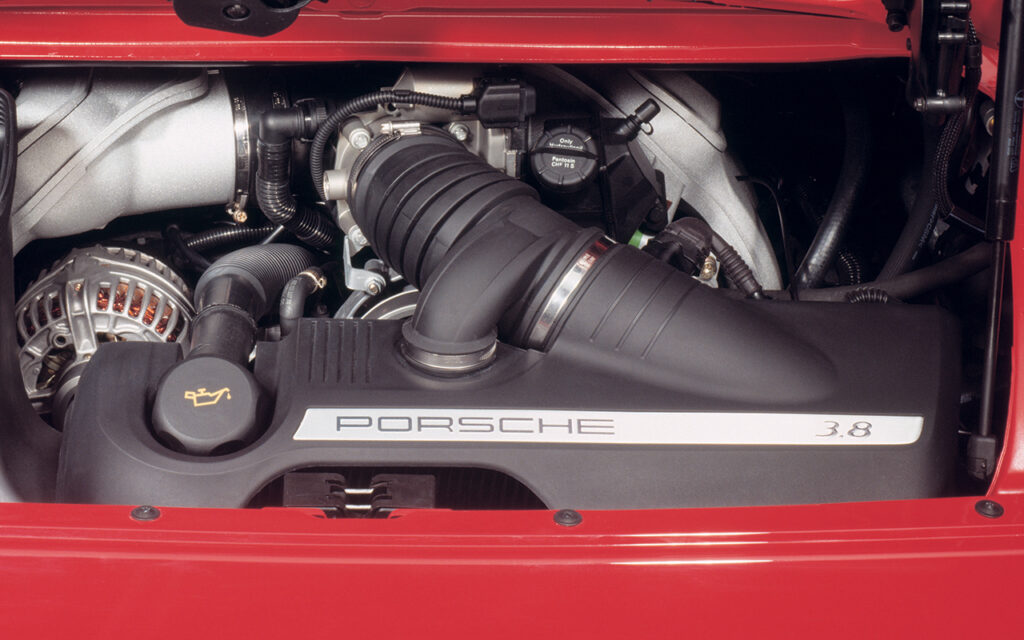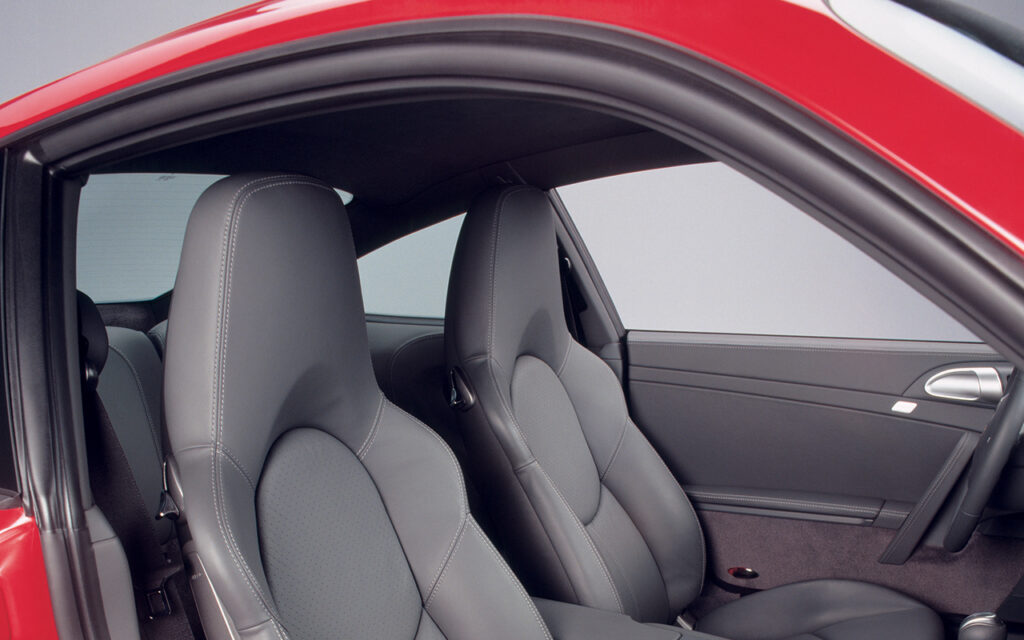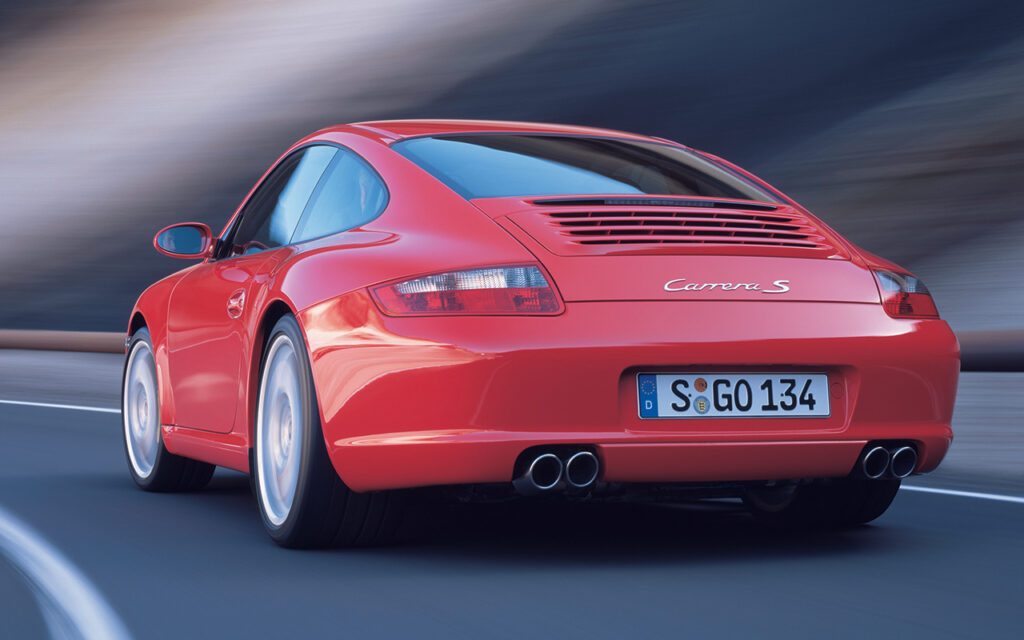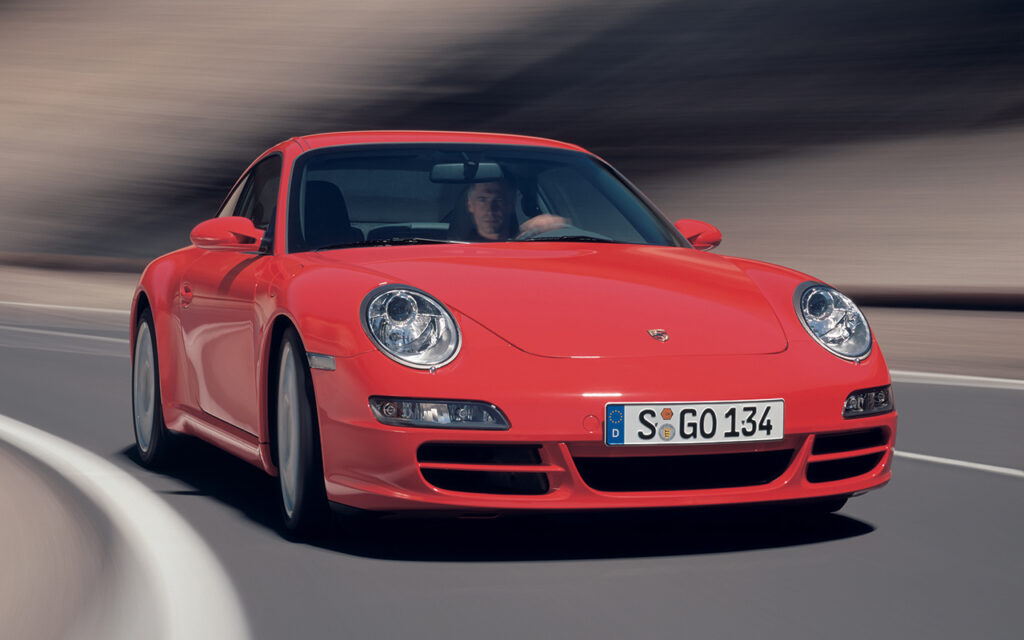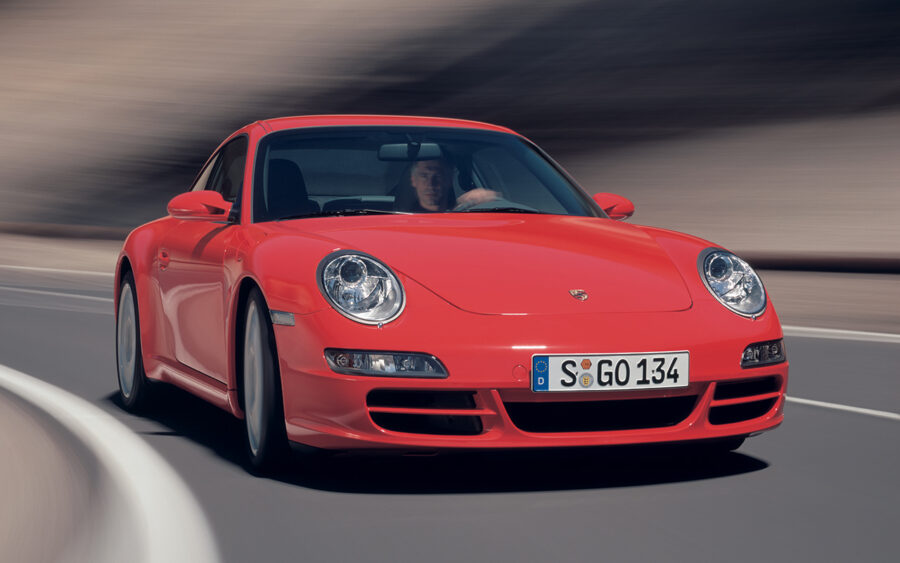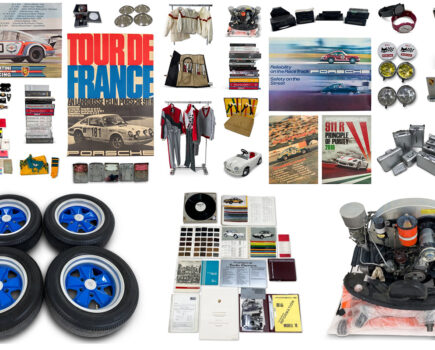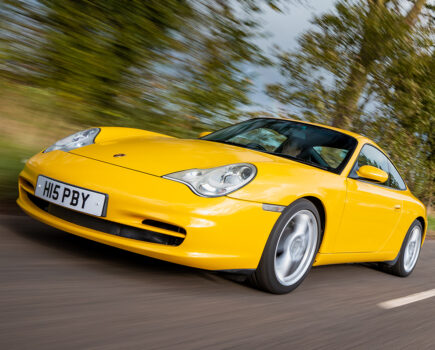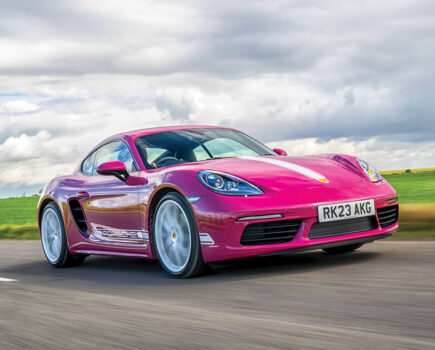Moving into space once occupied by the 964, the 997 is a hugely popular 911 now available at a sensible price
The 911 has dodged many bullets throughout its near six-decade existence. After the Stuttgart sports machine was pulled back from the brink of death in the 1980s, the following decade redefined the model, but new beginnings didn’t come without controversy — the arrival of the water-cooled 996 in 1997 was Zuffenhausen’s most pronounced rethinking of the original 911 concept. Despite cries of disdain from purists upset at the new 911’s joint development with the ‘lesser’ 986 Boxster, the 996 was a necessary reaction to Porsche having to embrace modern technology and call time on its line of air-cooled cars. Thankfully, the move proved to be a huge success.
Fast, hugely capable and refined, the 996 was a pivotal 911, but its production fortunes would be roundly eclipsed by what was to follow. Introduced in 2004, the 997 is sometimes referred to (by those less familiar with modern Porsches) as little more than a revised 996. This is something of an oversimplification.
Development began in late 1998. Porsche designers Grant Larson and Matthias Kulla, ably guided by then department head, Harm Lagaaij, conceived the 997 as a cabriolet first and a coupé second. The rationale for this seemingly unorthodox approach to vehicle design? It was argued the additional chassis stiffness needed for the open-top would also benefit the fixed-roof model. Traditional cues such as a narrow waist and oval headlamps recalled past iterations of the 911, while aerodynamic honing reduced the Cd figure to 0.28.
Broad wheel arches covered wider tracks and revised suspension, with eighteen-inch rims offered as standard equipment on entry-level cars. Additionally, where the 996 banished the 993’s dated cabin furniture and dash layout, the 997 introduced a completely new design, one incorporating hints of what was seen inside the Cayenne. Standing the test of time, the 997’s cockpit still feels fresh today.
The £58,380 Carrera and £65,000 Carrera S were first from the blocks. The former produced 321bhp from its 3.6-litre six-pot and sprinted to 62mph in five seconds. With an enlarged 3.8-litre lump and 295lb-ft torque, the 350bhp Carrera S was speedier still. This was also the first time in twenty-seven years the 911 was offered with a choice of different engine sizes. Better still, the X51 optional power pack lifted the Carrera S’s output to a lofty 376bhp. A six-speed gearbox was shared with the Carrera, while the hugely capable five-speed Tiptronic S remained on the options list.
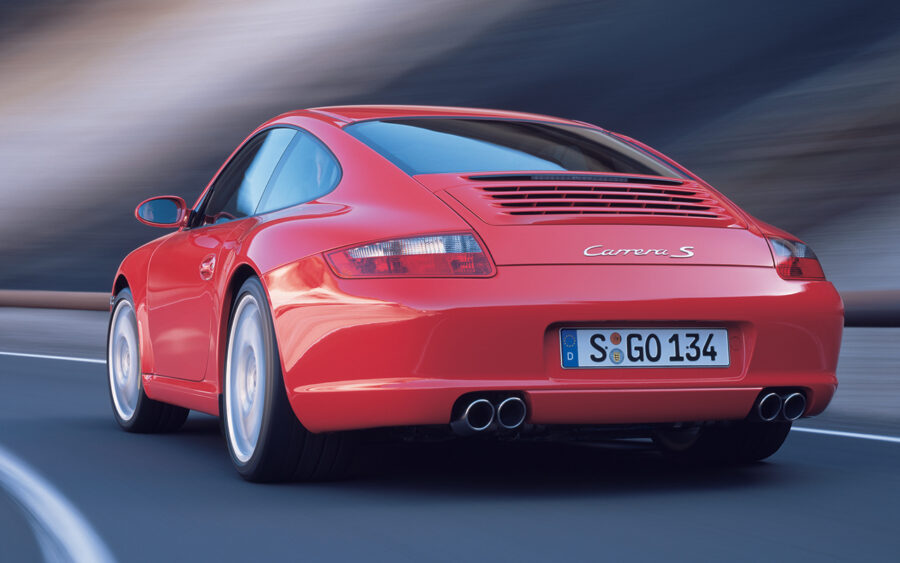
The Carrera S rode on nineteen-inch rims with Porsche Active Suspension Management (PASM) as standard. A Porsche debut – and the first time electronically controlled springs and dampers had been offered since the 959 – PASM enabled firmer suspension at the touch of a button. The optional Sports Chrono Package Plus (clearly identified by the presence of a dash-top stopwatch and lap meter) added more dynamic polish, adjusting engine and throttle pedal mapping, as well as intervention of Porsche Stability Management (PSM). Variable-ratio rack-and-pinion steering also debuted on the 997 and gave a more direct-yet-progressive feel.
The upgrades were transformative, as proven when the Carrera S lapped the Nordschleife a full twenty seconds faster than the equivalent 996. Understandably, Porsche was confident in its new car’s pace and technical supremacy, as highlighted by a relaxing of service intervals to 18,000 miles, thereby easing the ownership experience, though most specialists recommend sticking to more frequent fluid changes.
Prior to record-breaking 991 sales, the 997 was the most successful generation of 911. It’s easy to see why — everyone raves about the 3.8-litre S-badged 997s, but even the entry-level, rev-happy 3.6-litre variant is great. In keeping with tradition only previously broken by the 996-generation 911, the 997 was a direct evolution of its predecessor, although the major styling updates gave the impression this newer 911 was far more than a step on from what came before. That’s just as well, because exaggerated stories concerning the naturally aspirated 996’s supposed poor mechanical reliability meant Porsche’s flagship model needed a new image for a new era.
Both 3.6 and 3.8-litre 997s were offered in four-wheel drive flavour, as well as convertible, Targa and coupe body styles.
While Porsche made efforts to address the faults a few unfortunate owners experienced with M96 and early M97 engines throughout 996 and the 997’s first few years of production, it wasn’t until a change to the entire 997 line-up and a new flat-six design in 2009 that concerns were put to bed, which is largely why a second-generation 997 will set you back up to double what you’d pay for the equivalent early car. And if you’re thinking of emptying your wallet for £40k or more, you might want to consider the fabulous first-gen 997 Turbo.
Debuting at the 2006 Geneva Motor Show, the model featured its own styling, unlike the 996 Turbo, which shared its bumpers and other exterior trim with the same-generation Carrera 4S. Muddying the water somewhat, the turbocharged 997, while making use of the same four-wheel drive body as the 997 Carrera 4 and 4S, utilised a development of the same 3.6-litre, twin-turbocharged flat-six found in the 996 Turbo, which, in turn, was inherited from the 911 GT1 race car. In 997 dress and assisted by a duo of BorgWarner Variable Turbine Geometry (VTG) turbos, the engine produces 473bhp and up to 502lb-ft torque.
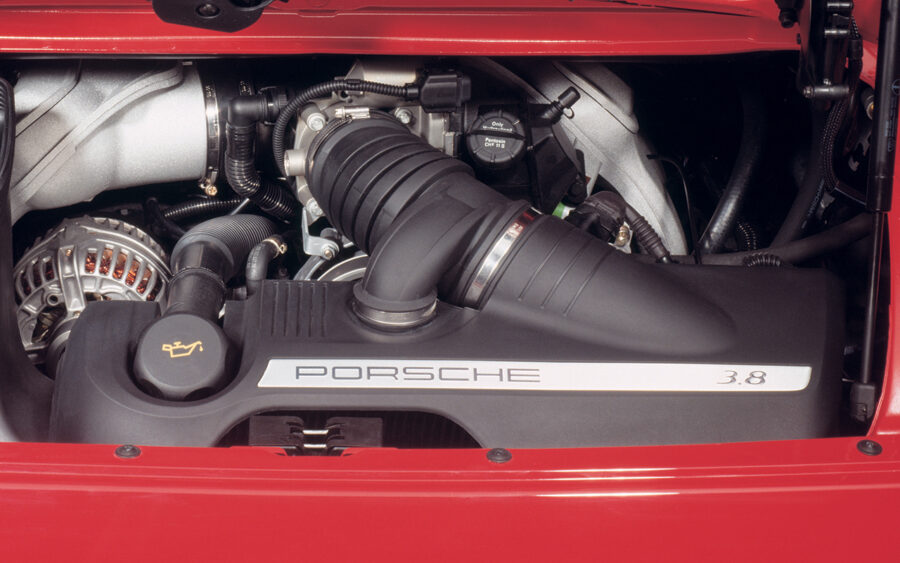
Timeline
1998
Development begins on the 997 ahead of its arrival as replacement for the 996-generation 911
2004
997 released in Carrera guise
2005
Carrera S and 4S arrive
2006
Targa 4 and 4S arrive with sliding glass roof layout. Targa model only offered with four-wheel drive.
Turbo model also arrives as Porsche’s first twin-turbocharged production model.
GT3 model introduced at Geneva Motor Show
2007
Turbo Cabriolet arrives
GT2 introduced
2009
997.2 generation introduced as midlife facelift with various changes across the board
